Let’s dig into what’s often considered the elephant in the room when it comes to hitchhiking.
Let me start by saying that hitchhiking is not as dangerous as it’s made out to be. And I wouldn’t consider it a dangerous activity at all.
And to not confuse opinions with facts, I’m going to share data from almost 10.000 hitchhiking rides submitted by 729 individual hitchhikers.
But it does come with some risks. And the level of these risks highly depends on a person’s abilities and how educated they are on the topic. Just like most other activities.
My goal with this guide is to provide you with the most objective view of the safety surrounding hitchhiking along with crucial safety tips. So you can take an educated decision about whether it’s for you or not.
📖 Table of Contents
- Hitchhiking Statistics and Data
- So How Dangerous Is Hitchhiking?
- Is Hitchhiking Safe?
- The Real Dangers of Hitchhiking
- How To Stay Safe While Hitchhiking
- Start in an Environment Where You Feel Safe
- Know Your Limits
- Carry Your Valuables Close to You at All Times
- The Essential Safety Checklist Once a Driver Stops
- Trust Your Gut
- Stay Confident Even If You’re Not
- You Can Always Say No
- 🛟 Personal Protection & Backup Gear
- Do’s and Dont’s in Case of an Emergency Exit (Step-by-Step)
- Should I Hitchhike?
- My Favorite Hitchhiking Adventure (Video)
- What’s the Best Way to Hitchhike?
Hitchhiking Statistics and Data
Let’s start with being a bit (data) scientific.
Thanks to Hitchlog and 729 of their users we have data on 9.564 hitchhiking rides at the time of writing.
Let’s dig into the main takeaways.
Experiences With Rides
- 4.23% – Very good
- 94.71% – Good
- 0.8% – Neutral
- 0.21% – Bad
- 0.06% – Very bad
📌 TIP: Of the 0.06% "Very bad" experiences (1 out of 574 rides) people are usually reporting intoxicated drivers, sketchy people, sexual harassment, or attempts of theft. Keep in mind that the risk of drowning during a lifetime in the US is almost double in comparison with this data (1 out of 1024 ~ 0.1%). You can read the "very bad" reviews here, but to avoid giving yourself a false impression of reality, remember to read some of the "very good" ones too.
Gender of Hitchhikers
- 61% – Male
- 39% – Female
📌 TIP: With an average age of 25 years.
Average Waiting Times
- 41% – 1-10 min
- 22% – 11-20 min
- 13% – 21-30 min
- 5% – 31-40 min
- 4% – 41-50 min
- 5% – 51-60 min
- 7% – 61-120 min
- 2% – 121-180 min
- 1% – 181-240 min
📌 TIP: Do notice that this data fail to include the times the hitchhiker(s) didn't get a ride.
Company While Hitchhiking
- 58% – Hitchhiked alone
- 36% – Hitchhiked with one other person
- 5% – Hitchhiked with two other persons
- 1% – Hitchhiked with three other persons
So How Dangerous Is Hitchhiking?
Now to the million-dollar question.
Based on the above data among my own experiences and others, there’s a good reason to believe that hitchhiking isn’t as dangerous as it’s made out to be.
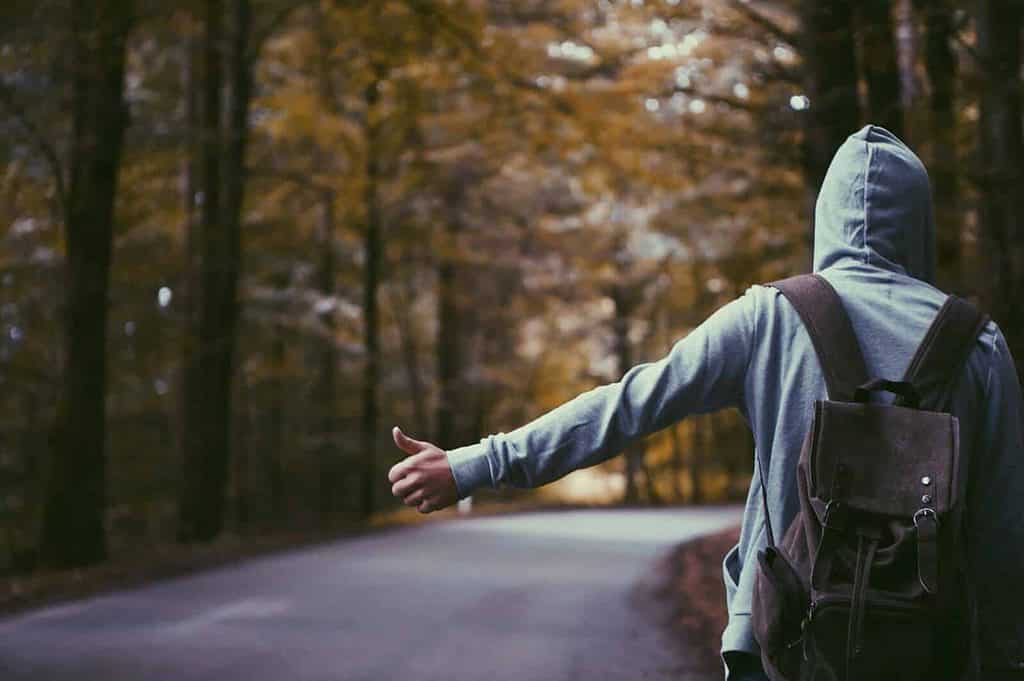
And the funny thing is that all the people I’ve met have hitchhiked. Or shared their own experiences. Have never been the one warning against it or claiming that it’s dangerous.
In a way it makes sense. Otherwise, they probably wouldn’t have tried it in the first place.
You’ve probably also heard that:
- The world is a dangerous place
- Never trust strangers
- Or that there are a lot of sick people out there
And when binging true crime series, podcasts, or documentaries. Or watch the news. All this makes sense.
Not to forget the horror movies that use hitchhiking as a part of the plot.
While there’s a truth to the three statements above. It’s as important to consider how big the risks surrounding these things are too.
If we’re not critical of these beliefs it’s not weird that hitchhiking seems dangerous.
And the same goes for the opposite where we glorify something for what it’s not. Convincing ourselves that something is less dangerous than it is. Often because we want to believe it to be true.
Is Hitchhiking Safe?
As mentioned in the beginning the safety of hitchhiking is highly connected with a person’s general abilities.
Such as being aware of your surrounding and reading people and situations. And how educated someone is on the topic of how to hitchhike safely.
Being a woman also comes with higher risks of sexual harassment or guy’s making a pass on them. Though guys have reported similar experiences.
If something like this happens most of the time it’s not unsafe per se, but still uncomfortable.
But like many other activities and aspects of life, there are risks involved, and taking safety precautions can greatly decrease them.
Understanding Where Our Fears Come From
Taking into consideration the above it can be hard not to get negatively biased. Especially when a good imagination gets the best of us.
And it doesn’t help that we humans are largely driven by emotions. Geared with an ancient brain that’s biased toward dangers to increase our chances of survival.
But despite all that.
Sticking out your thumb in a public place for an unknown time. Just to get picked by a stranger is out of most people’s comfort zones.
Exploring the unknown or trying new things often is.
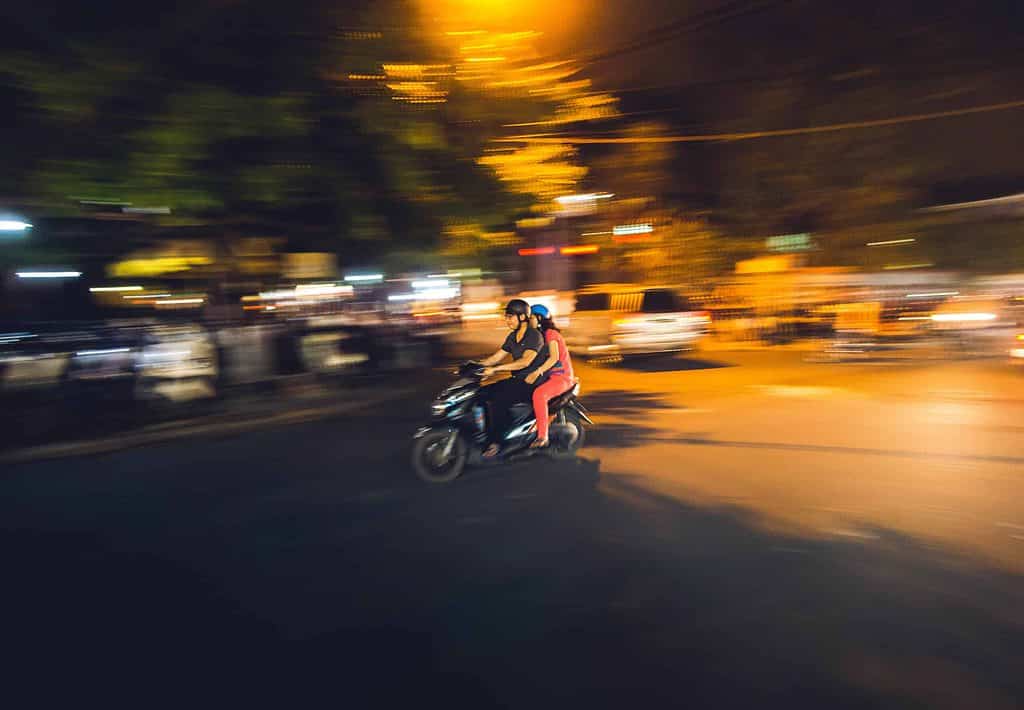
But when focusing on the unknown we also tend to underestimate the dangers of everyday life.
Such as driving a motorized vehicle is the biggest cause of unnatural death in the world. Especially motorbikes where you’re 28 times more likely to die in an accident compared to cars (USA).
As previously mentioned hitchhiking does come with certain risks. Though it’s often not what people think.
📌 TIP: If you're curious about this topic, I go more in-depth on how traveling can help us restore faith in humanity in this other guide of mine.
The Real Dangers of Hitchhiking
If we’re occupied with a largely irrational fear of things, chances are we get blind to what we really should focus on.
The result is that we’re ironically distracting ourselves to forget the things we can do to make hitchhiking safer.
Let’s go through each thing step by step.
Avoid Hitchhiking When It’s Dark
Not only are there fewer drivers to potentially give you a ride.
But it’s also more difficult and less safe in all aspects:
- It’s harder for the drivers to see you (which can also be a safety hazard)
- There’s an increase in people driving under the influence or being tired in the later hours
- You’re also more likely to be tired which affects your level of awareness and judgment
- It’s harder to find accommodation in case you’re not intending to camp.
Road Safety
First things first.
As a pedestrian on a road, there are certain things we should do to keep ourselves and others safe.
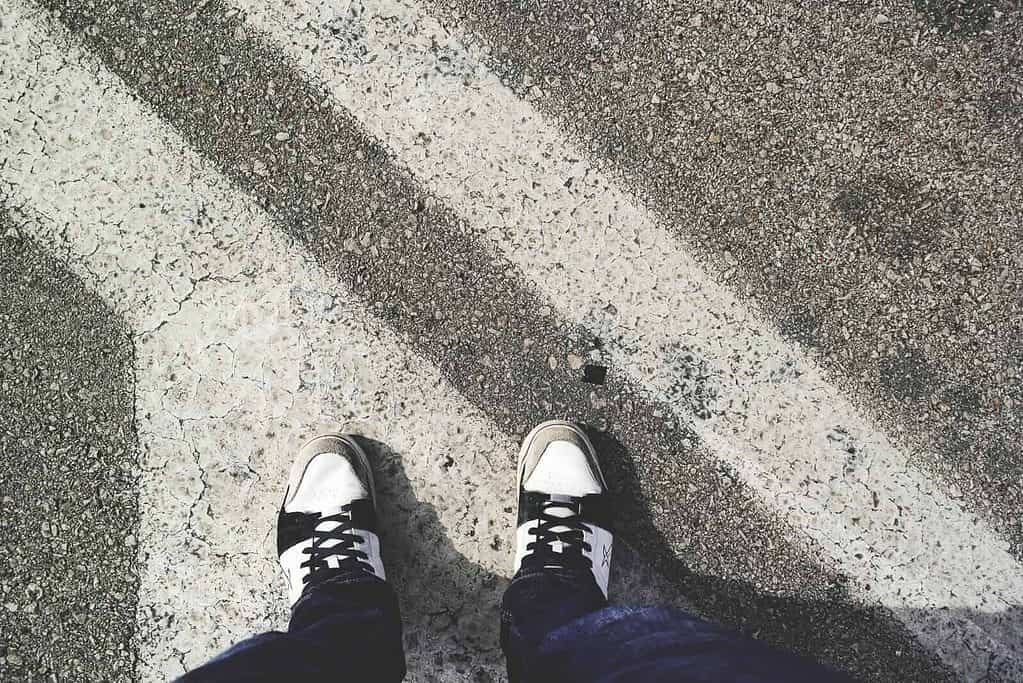
It’s not limited to the obvious of not getting run over. But also to avoid an accident caused by surprising often unaware drivers trying to avoid you, or making them stop at unsafe spots.
And remember that you don’t necessarily have to be on the road to provoke this. It’s all about the driver’s ability to react right before passing you.
Important things to keep in mind:
- Always stand as far away from the road as possible where you can still be seen
- Make sure it’s safe for the drivers to stop – a good rule of thumb is that there should be space enough for a truck to stop (you never know what vehicle might pick you up)
- Wear bright colors such as red – it will also make it easier for the drivers to spot you
- Don’t wear headphones if it affects your ability to hear your surroundings. Especially if you’re walking somewhere without an open area next to the road.
Impaired Drivers
When it comes to the drivers themself, this should be your main concern when hitchhiking.
Not only does intoxication affect driving, but also their personality. Sometimes for the better, but sometimes for the worst.
If you’ve seen how certain people act once they had a little too many you know what I mean.
Things to look out for:
- Open alcohol containers
- The distinct smell of alcohol
- Abnormal speech
- Drowsiness or hyper-activity
- Red eyes or irregular eye contact
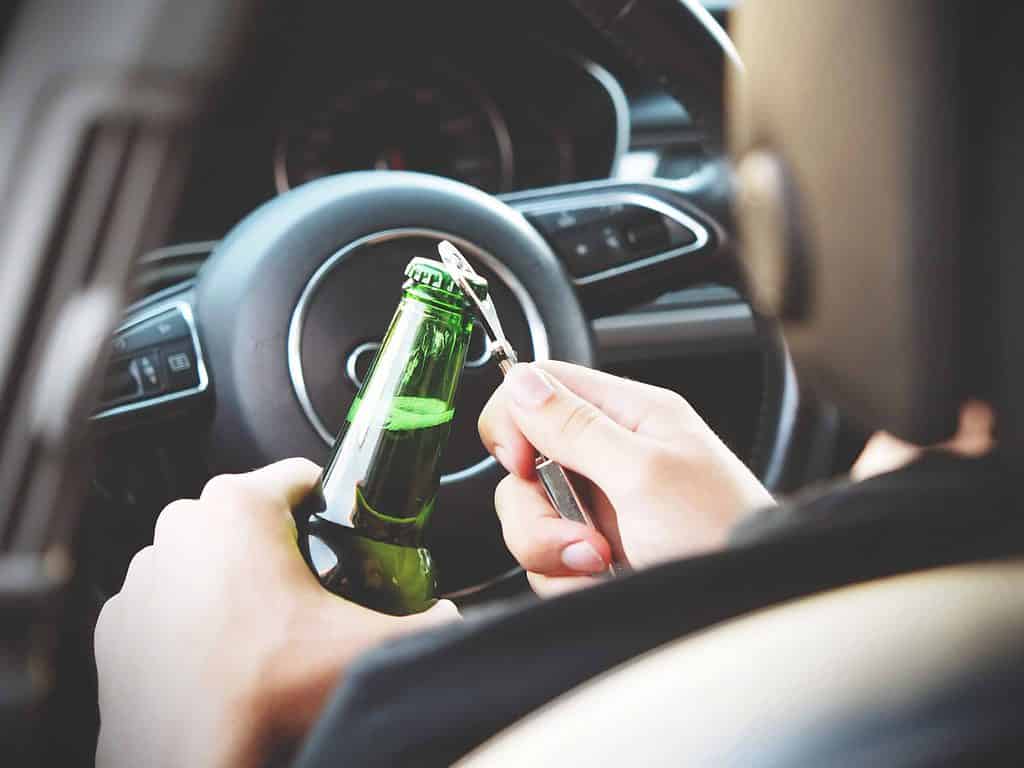
Sexual Harassment or Getting Hit On
When reading about people’s worst experiences with hitchhiking sexual harassment is often one of them.
While the majority of people experiencing this are women, men also do. Especially from other men.
While this can happen in many other places too, it’s surely different when sitting in the person’s vehicle.
But keep in mind that it’s not necessarily a danger despite being super uncomfortable.
In milder situations such as getting hit on or there’s flirting involved, I believe that hinting at already being occupied can de-escalate a situation if it makes you feel uncomfortable.
If your hints are ignored, consider getting off at the next suitable spot.
📌 TIP: Saving our most sexy or revealing outfits for other occasions than hitchhiking is also a good way to prevent this.
This is sometimes what makes a ride more interesting.
But it can also be discomfiting.
Just remember that being this doesn’t mean it’s necessarily a risk to you.
Consider it a good story to tell. It’s hard to get enough of these.
Weather Conditions
One thing is staying outside for a limited time during very hot, cold, or rainy weather.
But ending up in it for a prolonged amount of time. Especially when walking longer distances from one spot to the other can take it to a level we need to be prepared for.
Therefore checking up on the weather before going on the journey is recommended.
Cold Weather
This might go without saying, but bring enough warm layers of clothes. Three layers are usually the sweet spot.
Along with accessories such as a hat, gloves, and warm boots.
And if there’s the tiniest chance of not having access to accommodation, make sure to bring reliable camping gear you’re familiar with and comfortable using despite any circumstances.
When it comes to the weather it’s better to overprepare than under prepare.

Hot Weather
Too much of everything isn’t good.
A good rule of thumb is to bring at least 4 liters of water, electrolytes, or salty snacks. And a hat, scarf, or even an umbrella to cover yourself from the sun.
Sunscreen might also be a good idea.
📌 TIP: Always make sure you and your backpack can stay dry when there's a risk of rain.
How To Stay Safe While Hitchhiking
Before getting into the actual things we can do to make hitchhiking safer.
I want to remind you that having safety precautions doesn’t necessarily define how dangerous something is.
A good comparison is the mandatory safety instructions on flights. Having to go through these each time doesn’t necessarily mean that flying is dangerous.
Though flying is way safer than hitchhiking due to the general risk of driving a vehicle.
It’s all about investing a fair amount of time and energy in educating yourself to decrease the risk. But not unnecessarily worry or obsess over something.
Start in an Environment Where You Feel Safe
There’s no reason to rush things.
Hitchhiking can be exciting enough as it is, especially if you’re just beginning.
Here are a few good ways to make it more manageable:
- Start in an area you’re familiar with (such as your city or country)
- Invite a friend to join you (though do notice that hitchhiking in a group takes longer)
- Aim for a single trip on a shorter distance, to begin with.
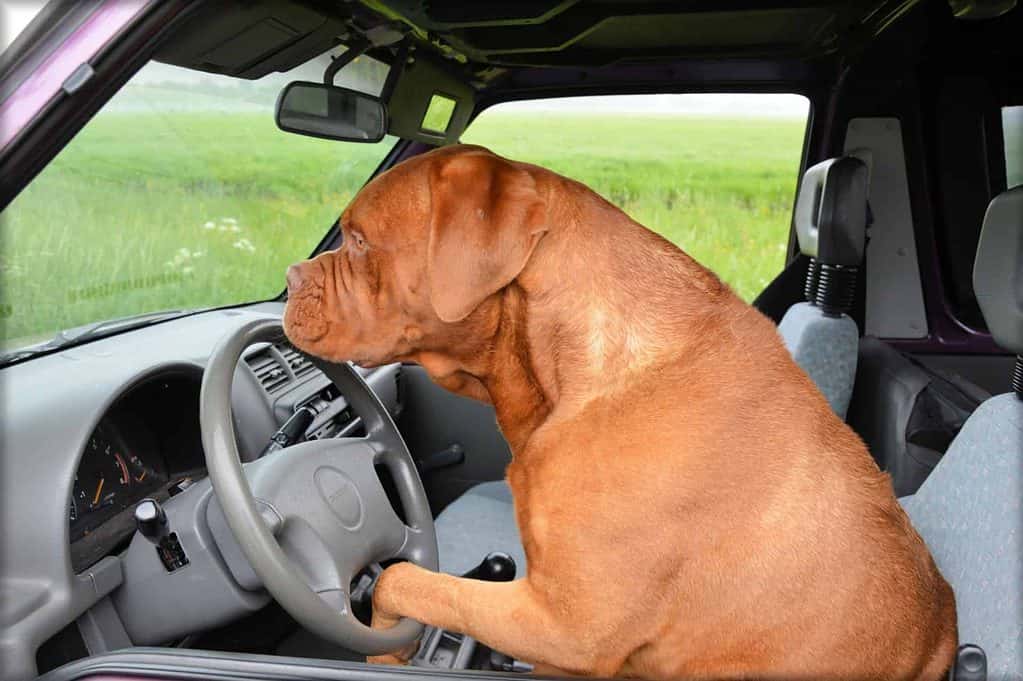
Know Your Limits
Just because people are hitchhiking in most countries all over the world doesn’t mean you have to.
To be 100% transparent with you, at the moment I wouldn’t feel safe hitchhiking in the majority of the USA, South America, the Middle East, or Africa for example.
This has nothing to do with current events or anything.
The answer is simply that I don’t know these countries enough to feel comfortable doing so.
I’m sure that if I gained more hitchhiking experience or got to spend time in these areas I would feel comfortable after a while.
And even if it’s contradictory to our statistics presented earlier, it’s largely about who we are as unique individuals. Everything isn’t about facts, it’s also about feelings.
I love getting out of my comfort zone, but if I can do something gradually I don’t see why not. You don’t have to either.
Even if it’s tempting when you see other people doing it. Of course, maybe they are braver or have higher risk tolerances.
But there’s also a chance they have more experience.
Carry Your Valuables Close to You at All Times
To decrease the risk of losing your most valuable items keep things such as your passport, wallet, and phone on you at all times.
A practical way to do this is by using a waist bag.
If you buy a larger one that also has space for a bottle of water and some of the gear I’ll recommend it to you later in the guide.
And remember – you don’t have to wear it around your waist, though no judgment if you do 😉
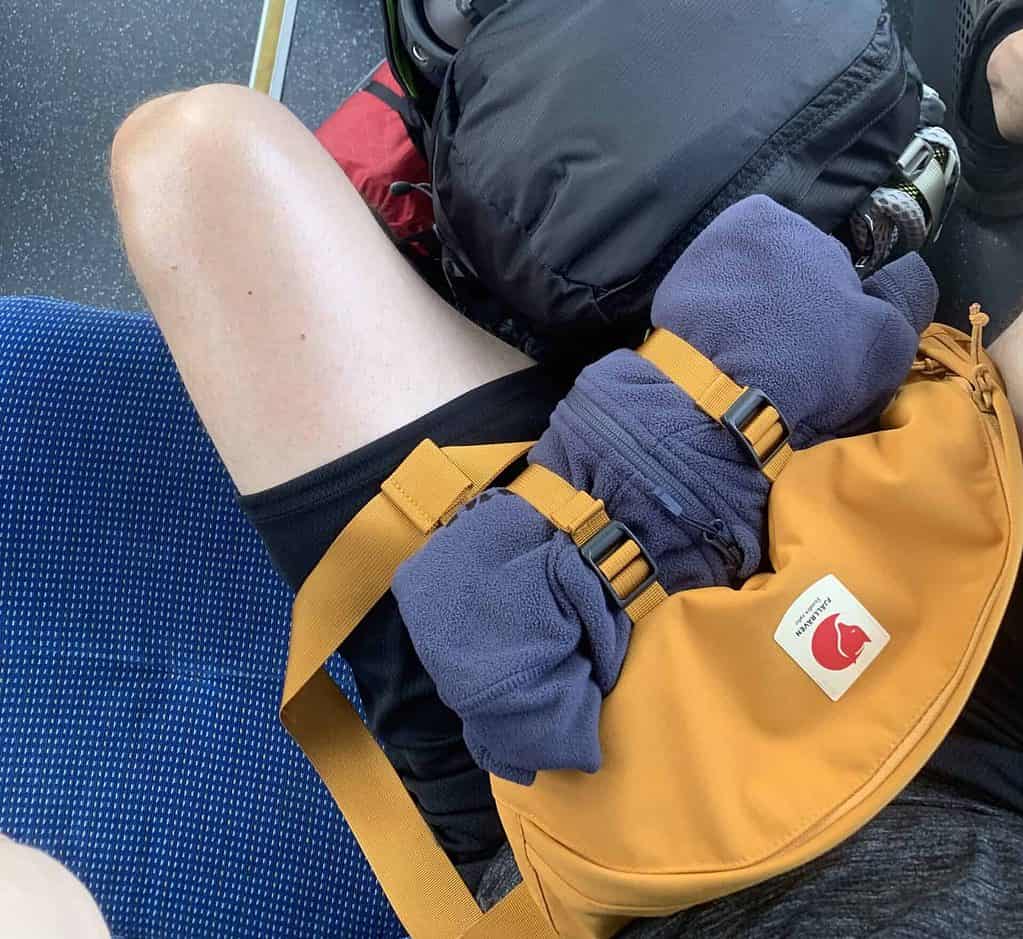
I use the Fjällräven Ulvö (Large) waist bag on 4 liters. It’s high quality meaning the most important elements such as the straps and zippers won’ fail you. And it’s rainproof.
The large version also comes with two practical straps at the bottom where you can thigh up your sweater or coat.
I’m 6’4″ / 193 cm tall and I wear it comfortably. But if you’re smaller consider going with the medium since I’ve read others mentioning it being too large for them.
It’s also a bit pricy and going with a cheaper option will most likely do fine as well.
📌 TIP: Carrying a waist bag is also a great hack if you want to have some extra free luggage space on flights.
Since waist bags are considered a personal accessory by airlines it doesn't count in your total volume and weight limit.
The Essential Safety Checklist Once a Driver Stops
⚠️ You’ll find the checklist in my overall hitchhiking guide under section “9. Step: The Essential Safety Checklist Once a Driver Stops“.
Trust Your Gut
Our intuition is the #1 most important skill when it comes to hitchhiking.
Especially when it comes to judging whether to accept a ride or not.
And best way to improve it is usually through experience collecting data and storing it in our sub-conscience.
This is another reason to start hitchhiking in a place you feel comfortable.
📌 TIP: Another good rule of thumb when it comes to hitchhiking is.
If you're in doubt - you're not.
This can be applied to other situations when traveling and in life as well.
Stay Confident Even If You’re Not
It’s hard to avoid getting out of our comfort zone when we first start hitchhiking. And that’s a part of the experience.
Just like other circumstances when we’re traveling and exploring the unknown or trying something new.
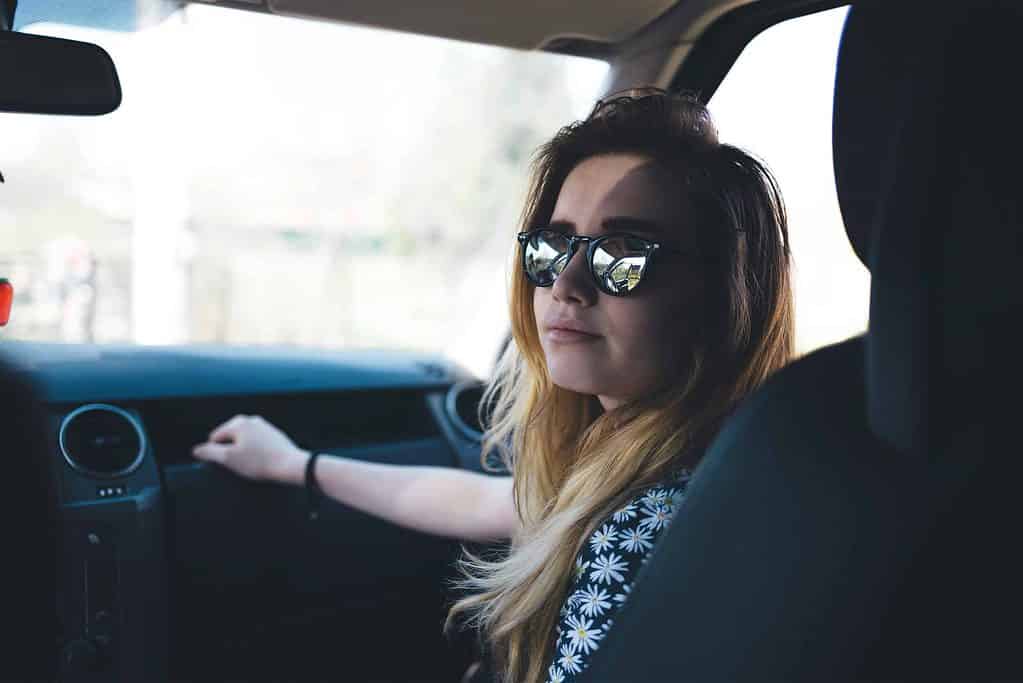
But acting confident even if you’re not is a good way to mentally support yourself. And prevent looking like a victim, or if people are crossing your boundaries and you have to tell them off.
This can also make us avoid shitty situations in the first place, or help de-escalate them if they happen anyways.
You Can Always Say No
No matter what you can always say no. Including leaving a ride.
And you don’t need a reason to say no. Simply wanting to is enough.
It’s tempting to stay in situations to avoid awkward situations or let politeness stand in the way. This applies to many other circumstances in life.
But it’s not worth being uncomfortable for, and never when it comes to our safety.
Remember that you can always wait for another ride.
Practicing self-integrity is also a skill that can greatly benefit our life in general. Such as reducing paying attention to what other people might think of us.
🛟 Personal Protection & Backup Gear
While our awareness and intuition along with know-how are the most important when it comes to hitchhiking.
There are also things we can do or invest in to increase our safety in different ways.
📍 Share the Location of Your Mobile Phone With Family and Friends
This is not only a function for retrieving your phone if you should lose it.
It’s also an easy and free way to increase our safety in other aspects.
By giving access to trusted family members or friends they can track your location using GPS as long as your phone is connected to the internet.
On iPhone, the app is called “Find my iPhone” and on Android “Find My Device“.
📱 Keep a Backup Phone With You
If you lose your main phone whether you drop it, break it, or it gets stolen on a journey, you now have an alternative.
Just remember to have an extra SIM card or eSIM such as Airalo preinstalled.
If you currently don’t have an old phone laying around, you can buy a cheap second-hand one.
But make sure the battery is all right so it doesn’t die on you after being turned off for a while. Chances are you won’t charge it often if it’s only used as a backup.

🔋 Power Bank or Laptop
This is simply to have backup power in case your phone runs out.
If you’re planning to travel with a laptop consider skipping the power bank. Most laptops can sufficiently charge a phone several times with a full battery.
Both items are heavy, so I suggest only bringing them if you have to. And in case you decide to go with a power bank consider a smaller one with solar panels
🔌 Car Charger
Why risk creating a problem when it can be prevented in the first place?
With these, you can charge your phone through a vehicle’s cigarette lighter sockets
And since you’re gonna spend a lot of time driving when hitchhiking, why not use that opportunity
🥋 Money Belt
These bad boys are not only made to keep our pants in place.
But also to hide money, a copy of our passport, or other valuables in case of an emergency or extra safety.
I suggest buying one that you can use as an actual belt to increase its effectiveness
🪪 “Fake” Wallet
Not fake per se, but a wallet without any value.
You can use an old wallet you might have laying around at home. Or buy a cheap one.
What you want to do is to fill it with generic cards that don’t reveal any of your personal information (expired or not). And a little bit of cash.
The point is that if you ever get mugged, you can use it instead of your real wallet. But make sure it’s convincing. This will increase the effectiveness and prevent escalating the situation.
🚨 Personal Alarm
Now to the more serious stuff.
This is a small device that you can carry close to you and use easily in case of an emergency.
When activated it generates a loud noise. The goal is to draw attention to you from your surroundings, whether you’re in a vehicle or not. And provoke a driver to stop.
I recommend finding a trustworthy product to prevent buying some cheap crap that’s either not loud enough or unreliable.
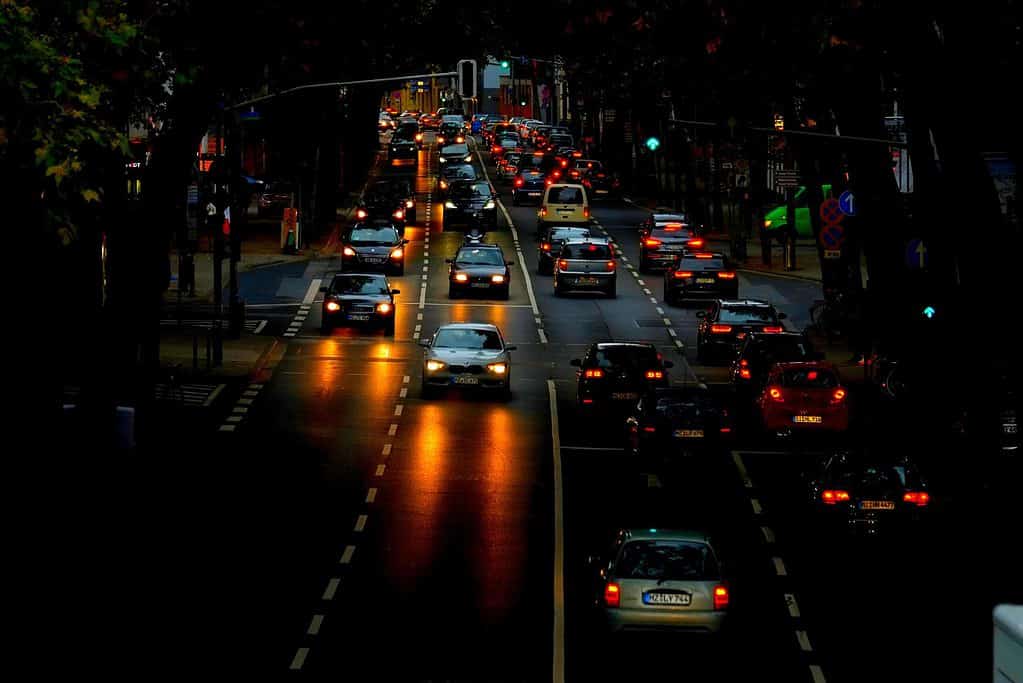
🥲 Pepper Gel (Not Pepper Spray)
In the last resort where we have no other choice than to defend ourselves, this is an effective but non-lethal weapon.
The reason you want to use pepper gel is if you were to use it inside a vehicle, pepper spray would backfire on you.
Though be careful about using it in a vehicle in motion since it would likely cause a crash hurting you or someone else. Also, notice that they’re illegal in many countries.
If you buy one also consider purchasing a practice bottle too so you know what to expect in the unlikely event of having to use it.
And remember that threatening to use it can also be enough.
🛰️ Garmin inReach® Mini 2 Satellite Communicator
While this is a pricy option the functionalities go with it.
With this device, you can send out an SOS signal with the click of a button everywhere in the world. It has other features too which you can check out here.
It’s extra useful if you’re planning on hiking and hitchhiking in rural areas. Especially in the wild and under more extreme weather conditions.
Be aware that an active subscription is needed. And consider their obligatory rescue insurance too if your travel insurance doesn’t cover the price of search and rescue events.
Do notice that the device is illegal in a few countries.
📌 TIP: Be aware of not letting any of these give you a fall sense of security. The other things we've previously gone through are still much more important when it comes to the safety of hitchhiking. Such as awareness, intuition, and preparation.
Do’s and Dont’s in Case of an Emergency Exit (Step-by-Step)
✅ Do: If it’s not an emergency yet, but you have a bad feeling about your driver. Pretend to feel sick and act like you’re about to throw up.
And don’t hesitate to put into words how spicy your last meal was.
Also politely insist that they don’t have to wait for you and that it might take hours before you feel fine based on previous experiences.
✅ Do: If that doesn’t work don’t escalate the situation but discreetly call emergency (US: 911, EU: 112, and Australia: 000).
If you have an iPhone, you can also use their SOS function by holding down the slide button and volume button for a few seconds.
This allows you to call the emergency number of the country you’re in (except India).
Android offers a similar option, and how you set it up and activate it depends on your phone’s brand.
Even though you’re not able to talk, today it’s easier for responders to track your location than ever before.
In the US you can also text 911 to do it more discreetly.
✅ Do: If the vehicle goes to a stop attempt to make a quick exit.
Do this by preparing the release of your seatbelt and opening the door in the same motion once the vehicle stop. And then quickly leave while grabbing your backpack.
✅ Do: Carry a storm lighter and paper of any sort close to you. And start a small fire causing smoke to provoke the driver to stop and catch the attention of surrounding vehicles.
❌ Don’t: Use the handbrake or pull the steering wheel if the vehicle is in motion, this can cause a dangerous accident.
❌ Don’t: Only use a weapon against the person if your life depends on it. There’s a big risk it can end up being used against you.
Should I Hitchhike?
Only you have the answer to this.
Remember that you don’t have to start in an unfamiliar environment. Your city, country, or somewhere else you’re comfortable with is also an option.
While driving a car by yourself is safer compared to hitchhiking. It’s probably only marginally.
Sure there are risks involved – but even more rewards in my opinion.
And remember that an unpleasant situation doesn’t necessarily mean a dangerous one.
But they can happen, and you have to decide whether the advantages outweigh the risks and if you’re able to take care of yourself.
Hitchhiking is safer for you to have a moderate level of awareness and intuition. Compared to someone that lacks these abilities.
And it might also depend on things such as your gender, physical size, and other things.
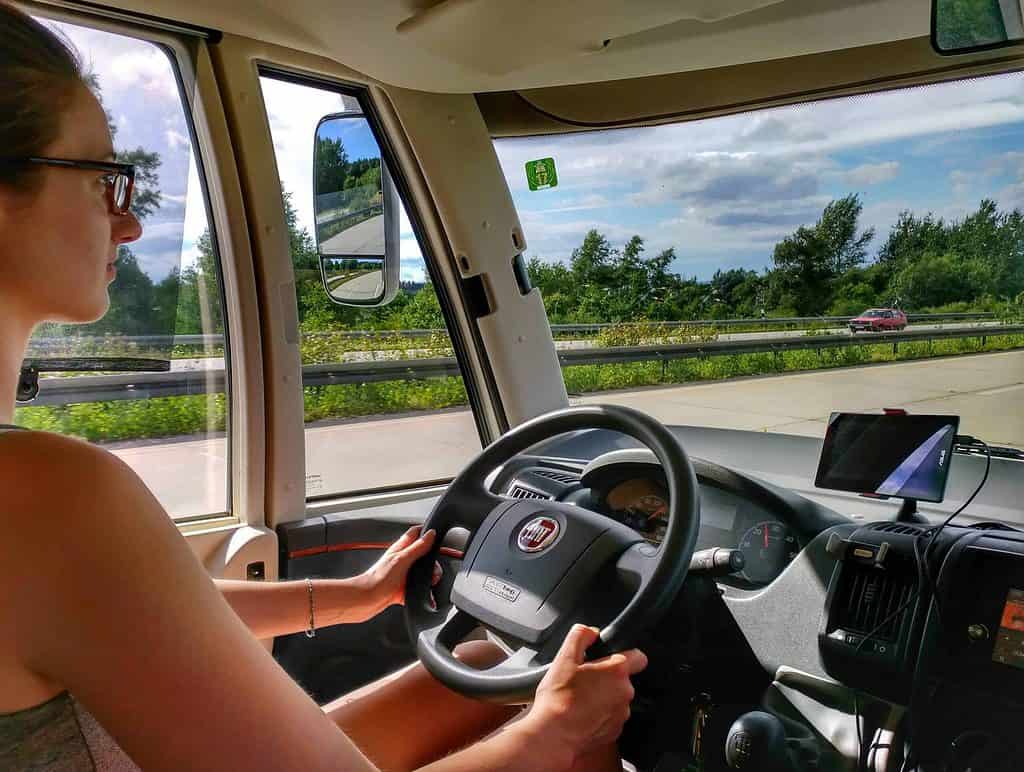
With that said hitchhiking is far safer than many other things in life such as certain everyday activities, hobbies, or jobs.
There’s rarely anything that’s 100% safe. Some things are just safer than others, and not definitively good or bad.
There’s a reason people drive motorbikes or do extreme sports. Though hitchhiking is far less dangerous as we’ve already covered.
I’m not into extreme sports but doing things with an acceptable level of risk is often a part of life. Or at least a life that’s worth living in my opinion. Whether it’s walking down the street or driving a car.
And with the aim for perfection in today’s society, it can be easy to forget that life is also about enjoying it, not only existing.
Keep in mind that most routined hitchhikers are more worried about when they’re gonna catch the next ride rather than anything dangerous happening to them.
📌 TIP: If you decide hitchhiking isn't for you remember that just because it's an option and other people are doing it doesn't mean you have to.
My Favorite Hitchhiking Adventure (Video)
With the majority of the focus on absolute worst-case scenarios, we’ve been through in this guide.
It would be irresponsible not to share the best-case scenarios too. Reminding us why we choose to hitchhike in the first place.
So let’s wrap it up with my favorite hitchhiking adventure to date containing all the things I love about hitchhiking.
Enjoy.
What’s the Best Way to Hitchhike?
If you haven’t already read the first part of this guide, I recommend that you do so. You can find it here: How To Hitchhike.
It covers all other aspects of hitchhiking such as:
- The ultimate 10-step checklist for getting a ride
- Why you probably shouldn’t use a hitchhiking sign
- How to find the best hitchhiking spots
- Essential things to prepare for and keep in mind
- How to see if hitchhiking is illegal somewhere
- Explain if you can hitchhike with others or not




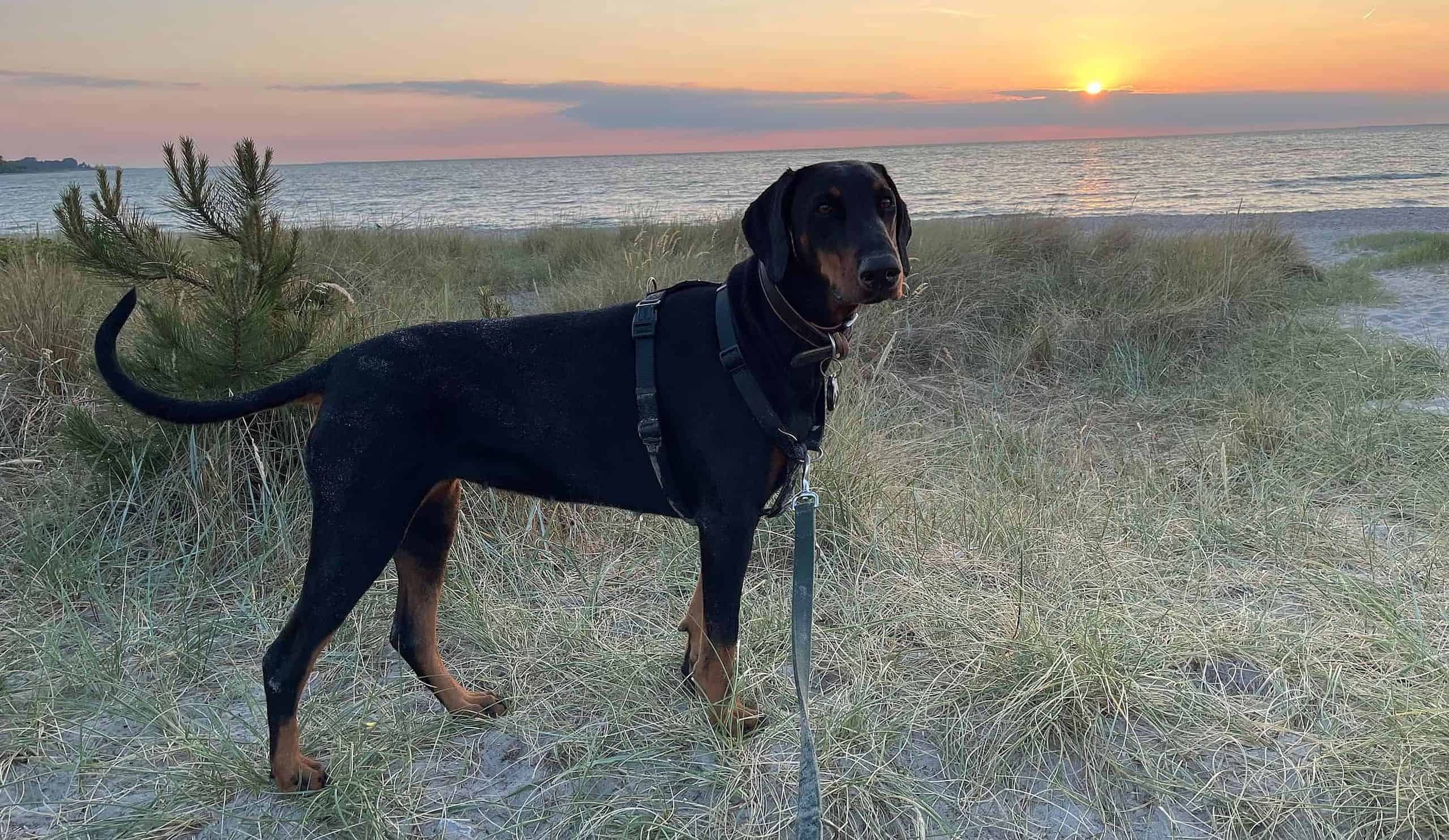
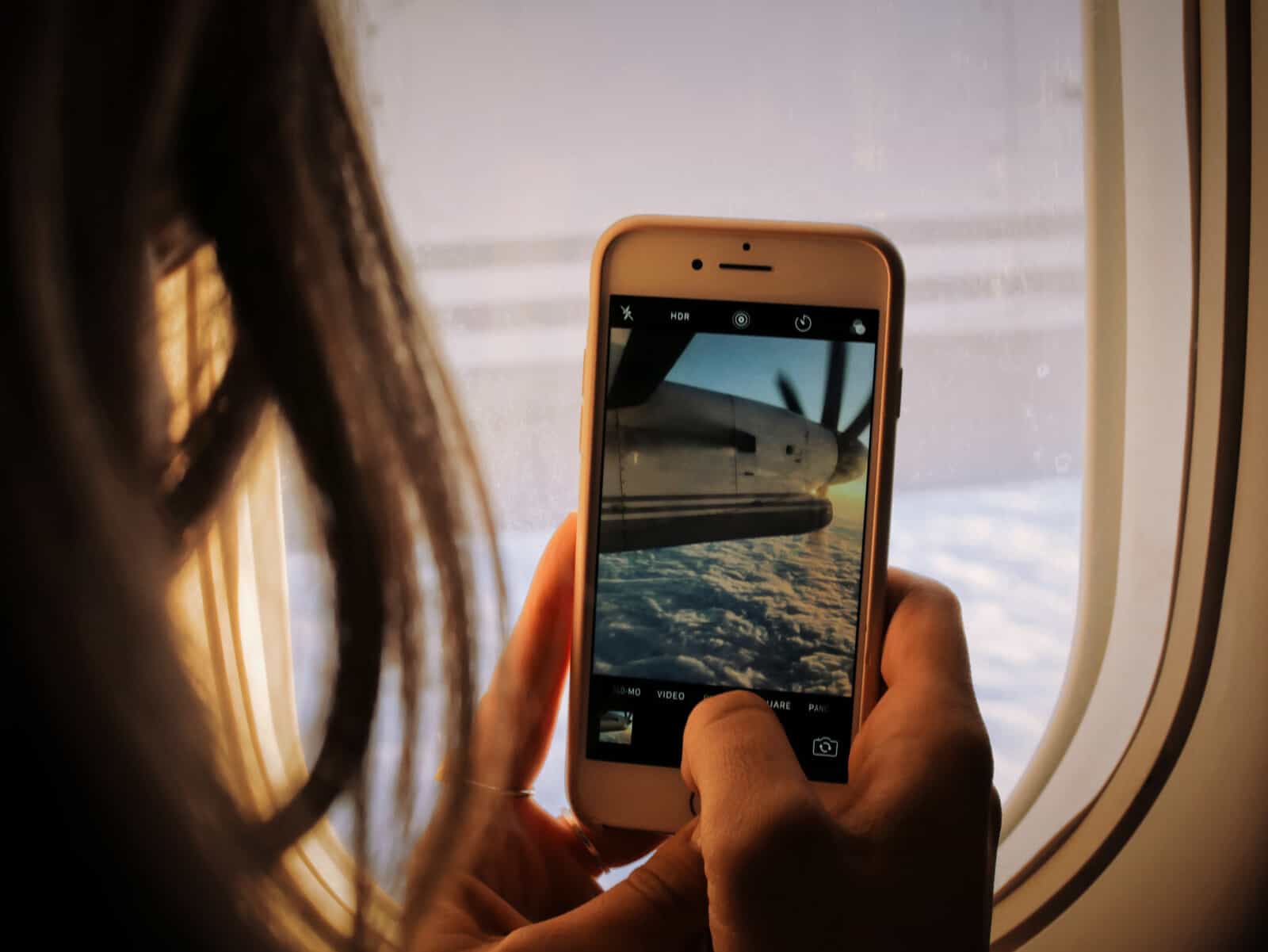
Leave a reply